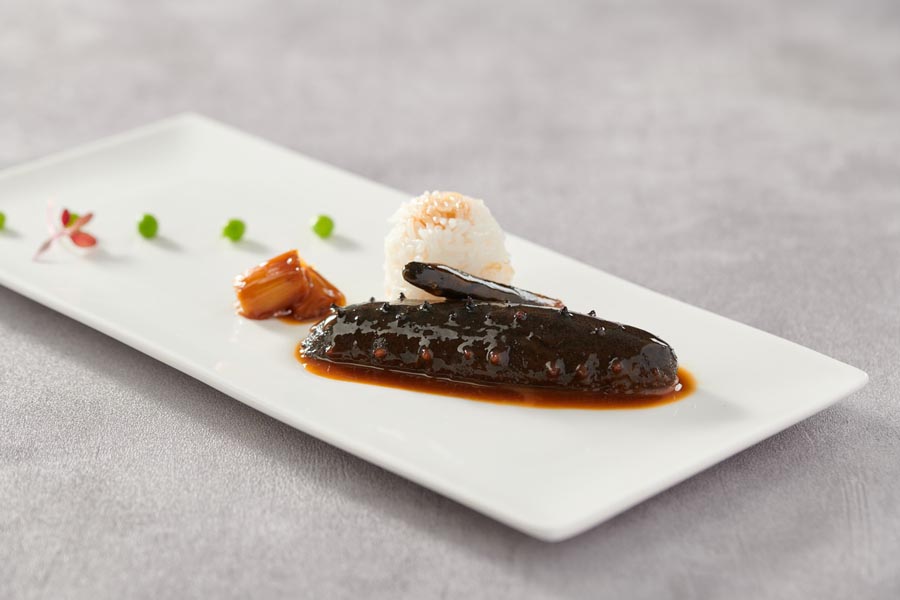 |
|
Braised sea cucumber with leek. [Photo provided to China Daily] |
Just as culinary staples are a highlight of Lu cuisine, they also feature prominently at Lu Style. Pot-braised noodle soup is another must-try.
"It looks like a simple dish but the timing of when to add the water is crucial and tests the skill of the chef," he says. "The leeks must be fried in hot oil until they just start to burn, and then water and the noodles are added to the pot. If it's done too early, the aroma of the leeks will not shine through, and if it's too late the leeks will simply burn."
All the noodles are handmade by the restaurant's pastry chef. According to Zhang, the pastry chef cuts each noodle to exactly the same width. "Sometimes, I have to ask the chef not to cut them so precisely as it makes the noodles look like they were made using a machine," he says.
There are two other dishes that are well worth trying: dumplings with a sea urchin filling, and steamed buns with dried green beans, fresh scallop and diced black pork.
The restaurant was awarded with a Michelin Plate in November, one of just three Lu cuisine restaurants listed in the Michelin Guide Beijing 2020.
The logo of Lu Style hanging above the entrance is also eye-catching. Created by Hong Kong designer Hon Bing-wah, the logo is based on the Chinese character lu-an abbreviation of "Shandong province"-which looks like a sail on the sea, passing the sun.
A twisting pine tree greets the guests, representing the warmth and hospitality of the people of Shandong.
From the names on the private dining rooms to the interior decor, the design of the restaurant has been clearly inspired by the ancient Chinese classic, The Book of Songs.
The book unites the two floors of the interior space-the ceiling is made from poems in the book, while each of the steps is made of book spines.
Zeng Hui, deputy director of Beijing Design Week's organizing committee, was the design consultant for Lu Style. He published a book, The Life Aesthetics of Lu Style, in December 2018.
"Lu Style, a museum of life aesthetics in catering, is shortening the distance between food and art," Zeng wrote in the book. "Even though each cuisine has its own beauty, the beauty of Lu Style is that it combines all the flavors found in Chinese cuisine."
Contact the writer at liyingxue@chinadaily.com.cn